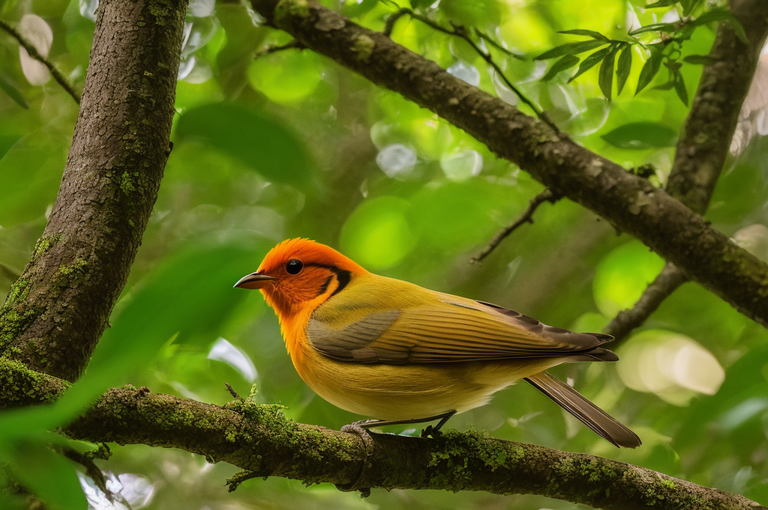Guide to Effective Bird Feeding: Understanding Species, Food Selection, Feeder Maintenance and More

This article discusses both positive and negative effects of backyard bird feeding. It offers species-specific advice, seed selection, feeder placement and cleaning, and the importance of providing clean water.
Understanding Bird Feeding
Alright my feathered friends enthusiasts, let’s dive into a topic we are passionate about: bird feeding. Now brace yourself as this might flutter your feathers a bit, but the hard truth is that bird feeding, despite being a seemingly harmless act, can potentially disrupt bird migration and local population balance. Yes, you heard it right, our kind gesture can sometimes lead to unexpected results. So, shall we ask ourselves, what do wild birds eat and contrast it with what we are actually feeding them?
Effect of Bird Feeding on Avian Behavior
In my early morning forays, I’ve noticed how the practice of us marvelling at, and thereby feeding birds, can affect bird behavior. Notably, our feed can potentially alter their migration habits. Overfeeding, especially during summer, can lead to negative impacts. Our well intended actions, unfortunately, can make them reliant on our food instead of their natural diet.
Ideal Bird Feeding Practices
But don’t you worry, my dear birding enthusiasts. If, in our pursuit of admiring these avian acrobats, we plan to feed them, here’s how we can do it right. We ought to place our feeders at safe distances from predators and windows. That’s the beginning of responsible bird feeding.
Negative Impact of Irresponsible Bird Feeding
When we swing to the other side, we may witness some not so favorable chapters. Yes, irresponsible bird feeding can harm our feathered pals just as much, if not more. Sadly, spillages and unclean feeders can become smorgasbords for diseases.
In our earnest desire to appreciate these glorious creatures, let’s remember that our actions can impact them directly. We ventured onto asking what do wild birds eat? But the question is, are we demonstrating responsibility in our actions? Let’s engage, explore and find out more!

Studying Specific Bird Species
Summer, with its melody of sunlight, befits certain avian denizens impeccably. Hummingbirds and goldfinches, for instance, thrive unabashedly in this season. Their slender forms veiled in feathers of unrivaled hues, they seem to mimic the essence of a summer’s day itself. Leveraging such inherent perks and feeding these resplendent creatures can yield profound dividends for bird enthusiasts. Not to mention, it brings with it, a portent allusion to that perennial query – what do birds eat in the wild?
Bird Species Especially Benefited in Summer
As the summer sun unfurls its golden charm, it casts a spell of radiant life on our feathery neighbors. Hummingbirds, vibrant and lively, as well as the regal goldfinches, bask in the glory of the season – their chirping tunes harmonizing with summer’s gentle melody. Feeding them during this time could be a rewarding endeavor, for them and us, the bird admirers, alike.
Birds’ Preferences for Specific Seeds
Just as we find in ourselves a penchant for certain delicacies, so do the birds hold affinities for specific types. Cardinals, tufted titmice, and Carolina chickadees – their captivating elegance subtly underscored – reveal a preference for sunflower seeds. Conversely, white throated, fox, and chipping sparrows, the mournful doves, and quaint quails lean toward the humble yet nutritious, white proso millet seeds.
Importance of Understanding Species-Specific Dietary Needs
Appreciating these species specific dietary proclivities can prove key to fostering a marvelously diverse avian audience in one’s backyard. Ponder on this diversity the next time you fill your feeders and ask yourself: Does my birdseed selection respect the food preferences of my guests, thereby replicating what birds eat in the wild? As always, we are provided with potent reminders that the complexities of understanding birds are never entirely tame, never just black and white. Hence, our fascination and commitment to studying them continue, one species at a time.

Food Selection for Bird Feeding
Like a whispering breeze through a field of golden grain, the prevailing wisdom of proper bird feeding has been passed from one avian enthusiast to another. Truly, the ideal time of year for abiding by this ancestral wisdom laces itself within the threads of extreme temperatures, immigration cycle, and the ebbing winter or early spring.🌸
Ideal Time of Year for Bird Feeding
Ah, feeding our little winged friends during the blistering throes of migratory frenzy and the wintry chaos is a delight in itself. Just as we humans yearn for warmth and abundance during such times, these birds too depend on a generous hand to help them through.🌬️❄️
Beneficial Types of Bird Feed
From my observatory fondly called the fat robin wild bird and nature shop I’ve noticed how the white proso millet and black oil sunflower seeds create quite the flurry. Not only do they attract a plethora of feathered visitors, but they also provide the sustenance the lifeblood essential to our dear flying companions. It’s quite lovely to watch!🌼🐦
Food Items to Avoid for Bird Feeding
Ah, how the eyes of an eager child light up at the prospect of sharing their sweetly melting chocolate or their chewy scrap of bread with a friendly warbler! But my dear adventurer, such foods don’t blend well with the delicate internal workings of our little friends. Alas, they lack crucial nutrition and can potentially harm the avian anatomy. Do refrain from bestowing birds with these human luxuries. ✋🍫
It is in such seemingly small but significantly kind acts that bitterness of the cold can be softened and the migration made less arduous. Like a seasoned conductor, it’s in your hands to conduct this grand symphony of harmony between humans and birds.🎶🎵 And always remember, my trusty readers, every seed matters in the grand melody of avian life.

Proper Maintenance and Placement of Bird Feeders
Before the first cockcrow, just like my feathered friends, I find myself contemplating the finer details of bird care. Drawing from my extensive observations, I’ll tell you this – cleanliness is key! The importance of regular bird feeder cleaning cannot be overstated. Keeping your feeders pristine avoids pesky parasites and nips disease transmissions in the bud.
Let’s chat about the location now. Safe bird feeder placement is more of an art than a science. The golden rule is to place feeders at least twelve feet away from any potential threat or window. Striking a balance between accessibility and safety, akin to a parrot’s perch in the wild, is essential for ensuring bird safety around feeders. Why, you ask? Well, to prevent bird collisions, of course! It’s been my observation that birdfeeders should ideally be situated more than thirty feet or less than three feet from a window, much like how the wild bird rescue fort worth operates.
The pursuit of avian truths unveils peculiar specifics, even in things as mundane as feeder placement. It’s these intricate details that enthral me, enhancing my passion and respect for these magnificent creatures. The effect of our efforts on their lives, intertwined in ways more profound than you’d think, fills me with an indescribable satisfaction.
Additional Measures for Bird Care
As your steadfast guide through the avian world, I encourage you to focus more intensely on how birds behave during various seasons. Young ones, for instance, are usually following their parents’ harmoniously composed rhythms during the warmer months, gorging themselves on abundant insects and learning where to find food in the wild. Truly, it’s a symphony of survival that reflects the unending cycle of nature.
Bird Activity during Various Seasons
In the throbs of summer, while we humans seek shade and a cold refreshment, birds are darting about focusing on insects. Feeding the next generation, teaching them to find what do wild birds eat in the open spaces, and preparing for the coming colder months. Observing them as they ceaselessly flit about, you almost can’t help but ask what do birds eat in the wild? a question for which the answer is as diverse as the species themselves.
Providing Clean Water for Birds
As you admire these flying maestros’ soaring harmonies and tireless dedication, think of the fat robin wild bird and nature shop. Like the passionate owner of this haven for wild birds, one additional melody you can contribute to keeping their chorus alive is by providing a consistent source of clean water— even in chilling temperatures.
Starting your own wild bird rescue fort worth with this dedicated action is greatly beneficial for these winged composers of serenity. Birds use water sources not only for drinking but also for bathing, helping them maintain their plumage health throughout the year.
Taking these additional measures for bird care, you play your part in preserving the beautiful orchestra of chirping that greets us each morning and lulls us each evening, ensuring that the symphony of birdlife continues, unhindered and melodious, into the future.


